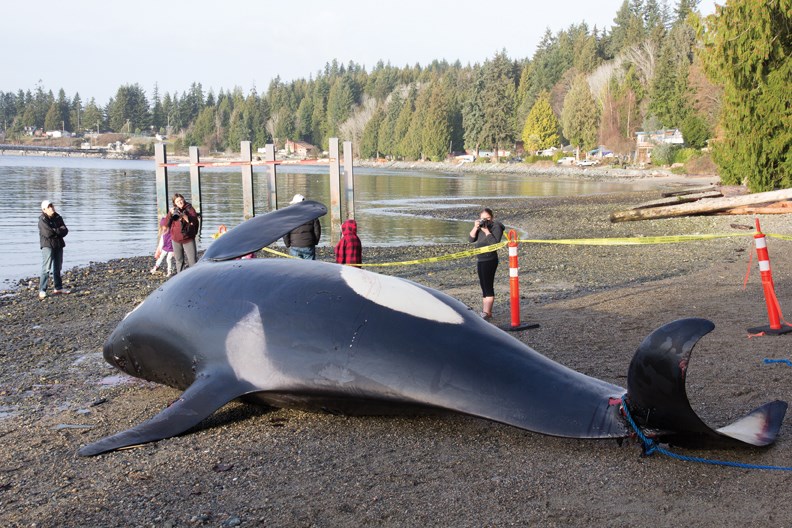The orca found dead near Sechelt late last month was one of seven from the southern resident population that died in 2016, making it one of the worst years for mortality in J pod in the past two decades.
Preliminary necropsy results released Dec. 22 show J34, also known as DoubleStuf, likely died from blunt force trauma to the dorsal side that could have been caused by a collision with a boat. The whale was 18 years old.
Researchers are still waiting for results from a CT scan on the whale’s skull and the analysis from tissue and blood samples.
The most recent member of J pod reported dead was J2, or Granny. The female, thought to be anywhere from 78 to 100 years old was listed as missing late last year and, although no carcass has been recovered, it’s now believed to have died leaving only 78 confirmed living members of the pod.
Tessa Danelesko, a Vancouver Aquarium researcher and coordinator of the BC Cetacean Sightings Network, told Coast Reporterthis week that the deaths have “raised a number of red flags” about the outlook for J pod, one of the most closely studied marine mammal populations in the world.
“We’ve been concerned about this population for a long, long time,” she said. “There are a lot of questions up in the air and the scientific and research community are trying to be optimistic, but it’s difficult when you continue to see negative information like this.”
She also said researchers haven’t identified a common pattern in the deaths. “One of the biggest concerns is that food availability is not what we’d like it to be … and this is likely contributing to the higher mortality rate, but this population also faces a number of other known threats such as pollution, vessel-related threats like anthropogenic noise.”
Danelesko said it’s hard to say what sort of impact the high mortality of 2016 will have on the social structures and relationships within J pod, especially the death of J2, which was seen as a leader within the southern resident population.
“This is something that researchers and those monitoring the population will be looking at really closely,” she said. “When you have deaths like this there does tend to be a re-shuffling. … There aren’t a lot of older females in the group right now, so a lot’s up in the air.”
According to Danelesko, reports to the Cetacean Sightings Network have been instrumental in both studying and tracking living orcas and locating and recovering dead whales.
The Department of Fisheries and Oceans (DFO) is still looking into what may have caused J34’s injuries and they’re asking anyone who may have information to call the Observe, Record, Report line at 1-800-465-4336.
The shíshálh Nation will eventually take possession of J34’s carcass and preserve the skeleton. DFO said shíshálh members’ “efforts and collaboration were central to locating the animal and facilitating a successful necropsy.”



